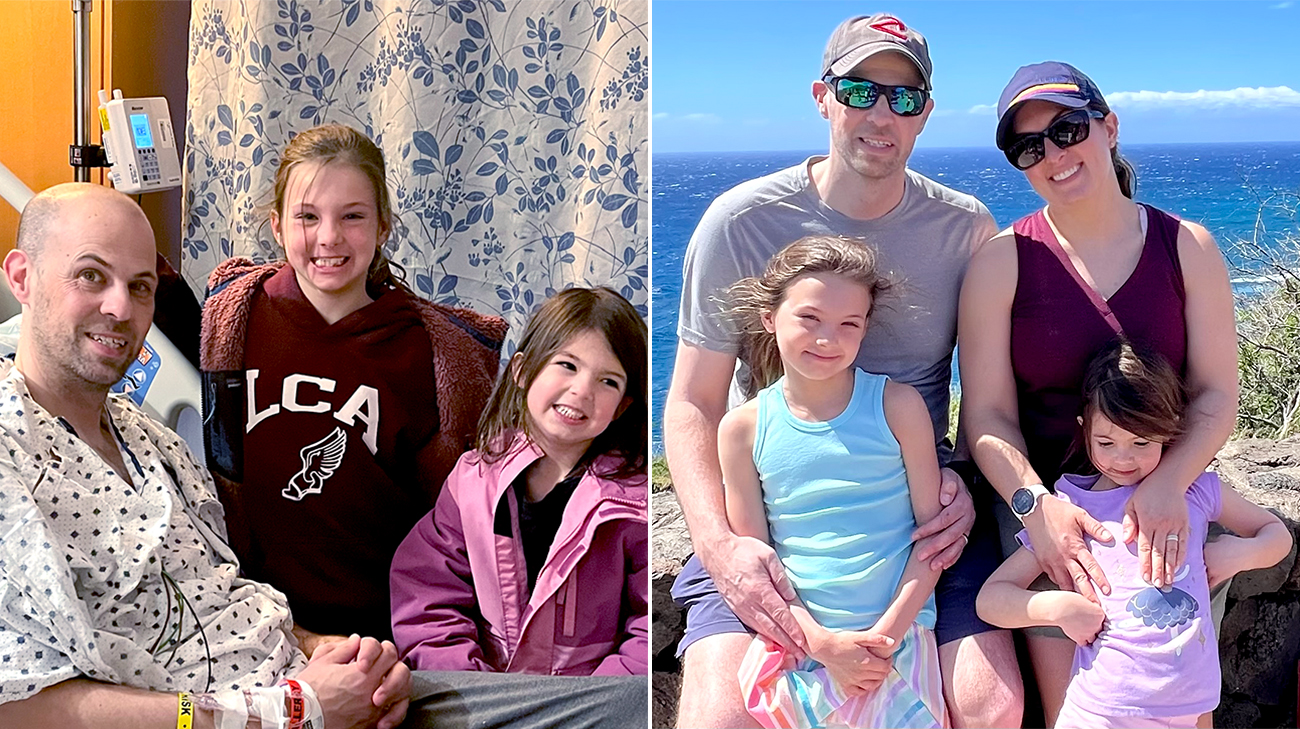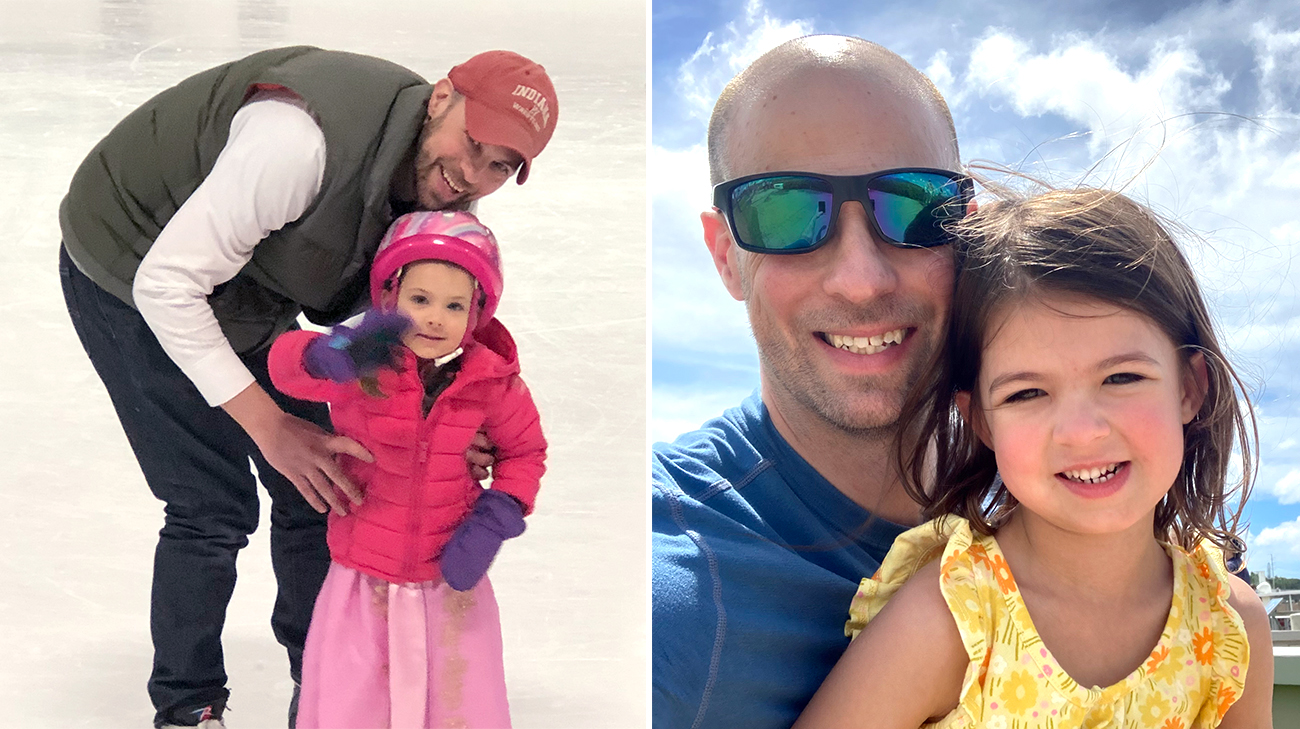
As an active father of two, Kevin Hudson never thought he’d be among the rising number of young adults experiencing a stroke. It started out as an average Wednesday for the 43 year old at the time. He was working out before taking his daughters to school when his symptoms started.
“I remember my eyesight getting really blurry at the gym. I thought maybe I just stood up too quickly,” says Kevin of Lakewood, Ohio, who had the stroke two weeks from his birthday.
He didn’t think too much of it at first and wanted to finish his workout, but he ultimately went home because he felt his body was telling him something wasn’t right. Kevin soon felt weakness in his right leg and couldn’t use his right arm. He also had trouble talking and could only say, “yeah,” to questions his wife would ask him. She ultimately called 911. Although he couldn’t communicate well, he made it a point to make sure he could recognize all the street names as he passed them in the ambulance on the way to Cleveland Clinic Fairview Hospital.
“I grew up in the area and know every intersection. I thought I wasn’t in a bad spot since I recognized the intersections as we passed them. I still knew where I was at least,” says Kevin.
Further testing at the hospital revealed he was having an ischemic stroke, which is when a blockage keeps blood from reaching all areas of the brain. “Kevin lost blood flow to his brain due to a dissection, which is a tear of the blood vessel,” says neurosurgeon M. Shazam Hussain, MD.

Kevin is an active father of two who didn’t think he’d be at risk for a stroke at 43 years old. (Courtesy: Kevin Hudson)
According to Dr. Hussain, Kevin first received thrombolytics, or clot-busting drugs, which are used to break up and dissolve blood clots. He also underwent surgery due to the severity of his stroke.
“We navigated catheters, which are essentially little plastic tubes, up to the area of the dissection to get the blood vessel opened up. We also had to lay down a series of stents, which are like wire mesh, to prop open the blood vessel,” says Dr. Hussain.
Through their efforts, normal blood flow was restored to Kevin’s brain. He recalls experiencing weakness in his hand but says he felt fine overall after undergoing treatment for his stroke. However, follow-up testing revealed another issue: an aortic aneurysm.
“The dissection is due to an underlying problem with the blood vessels being fragile essentially, and the same process that causes the dissection can also cause issues with the aorta,” says Dr. Hussain.
The aorta is the largest artery that delivers oxygen-rich blood to the body. An aortic aneurysm is a bulge in the wall of the aorta, which forms in a weak area in the artery wall. They may rupture or split, causing life-threatening internal bleeding or block the flow of blood from a person’s heart to other organs. In Kevin’s case, he caught it early enough to undergo a successful surgery before it became life-threatening.
“I didn’t have any symptoms or risk factors when it came to the aortic aneurysm, so we wouldn’t have known about this if it wasn’t for my stroke. My stroke saved my life in a way,” says Kevin.
Kevin continues to follow up with his care team but doesn’t have any lasting effects from his stroke after undergoing rehabilitation. Looking back, he never expected to face a health scare like this when he was 43 years old.
“I consciously try to take reasonably good care of myself to mitigate any risk factors. I would certainly say to others to monitor your health and make sure you're in tune with your body because it will let you know when something's not right,” says Kevin.

Kevin looks forward to continue doing the things he loves from golfing to being active with his family. (Courtesy: Kevin Hudson)
Dr. Hussain explains the rise in stroke among younger adults is partly due to individuals developing certain risk factors for stroke at a younger age, like type 2 diabetes, high cholesterol and high blood pressure.
“Your blood pressure could be elevated, and you don't even know it. That’s why it’s important to go to your doctor regularly and know your numbers. If there is an issue identified, make sure you work with your doctor closely to get that under control,” says Dr. Hussain. He adds knowing if you have a family history of stroke is key. Dissection is also a common cause in young people who experience a stroke. Kevin specifically had a carotid artery dissection.
Above all, Dr. Hussain stresses the importance of knowing the signs and symptoms of stroke by remembering the acronym “BE FAST,” emphasizing that T stands for time. Calling 911 and getting immediate help is crucial if you notice any symptoms.
Kevin says he’s grateful he received care quickly enough and doesn't have any long-term disabilities from his stroke. He’s also thankful for his care team, including Dr. Hussain, who Kevin says has offered reassurance and guidance throughout his health journey.
“Whether it's taking my kids to the playground, going for a hike or playing golf – it's all more meaningful now because there was a question if I would ever be able to do this again after my stroke. This experience has put things in perspective for me. You can’t take anything for granted. Being able to move and be active is a gift,” says Kevin.
Related Institutes: Heart, Vascular & Thoracic Institute (Miller Family), Neurological InstitutePatient Stories
Perseverance and Focus Help Ovarian Cancer Survivor Beat the Odds HIPEC During Surgery Helps Keep Disease Under Control
Dec 10, 2025
Boy With Advanced Liver Cancer Thriving After Lifesaving Living Organ Donation From Aunt
Dec 8, 2025
Against All Odds A Journey of Recovery After Stroke
Dec 5, 2025
“Dr. Pervez is absolutely incredible, I can’t say enough about him and the speech therapy department. And Cleveland Clinic is phenomenal. They’ve always been wonderful, and I recommend them to everyone I talk to.”


